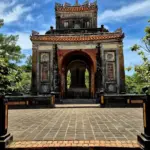Hue Royal Tombs: A Comprehensive Guide by ovuigo.com
Overview of the Hue Royal Tombs and Their Historical Significance
The Hue Royal Tombs are not simply burial places; they are the living chronicles of Vietnam’s imperial legacy. Stretching along the scenic banks of the Perfume River, these imperial mausoleums form a crucial part of the Hue Monuments Complex, which, together with the Imperial Citadel and historic temples, was declared a UNESCO World Heritage Site in 1993. The tombs embody the cultural zenith of the Nguyen Dynasty, which ruled Vietnam from 1802 to 1945. Each royal mausoleum, from the Tomb of Tu Duc to those of Minh Mang and Khai Dinh, mirrors the personal values and philosophies of the emperors interred within them, making these sites essential chapters in Vietnam heritage sites.
More than mere stone and mortar, the tombs are gateways into ancestral worship and the Confucian traditions that shaped Vietnamese life. Their construction on the southern banks of the Perfume River was rooted in geomancy, reflecting respect for both nature and spiritual harmony. Enduring through centuries, these monuments are not only memorials but powerful symbols of architectural heritage that continue to inspire awe in travelers and scholars alike.
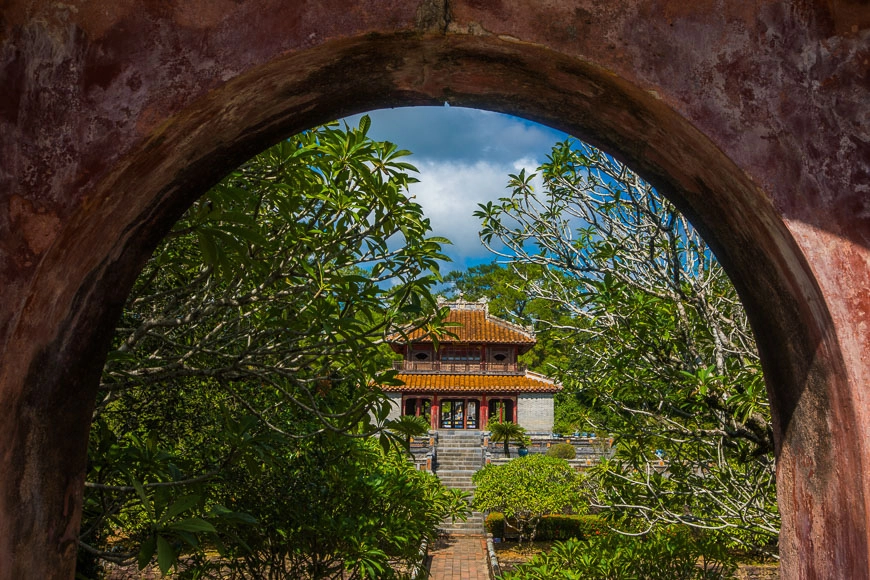
Architecture and Symbolism of the Nguyen Emperors’ Tombs
Each tomb within the Hue Monuments Complex is a unique blend of traditional Vietnamese architecture and influences derived from French and Chinese styles. The symbolic layout of each imperial mausoleum hinges on geomancy principles. Ancestor veneration drives every design choice—ponds, pathways, temple halls, and outer walls combine to evoke harmony between the earthly and the spiritual.
Among the most familiar symbols, dragon statues guard ceremonial steps, while lotus flowers, imperial crests, and phoenix motifs decorate gates, roofs, and interior walls. Stele pavilions stand in silent dignity, their engravings recounting royal deeds and virtues. Visitors will also find mosaics featuring the mythical Lac bird—a hallmark of Vietnamese creativity.
Many tombs integrate French-influenced decorative elements, a testament to the evolving tastes during the Nguyen era. Khai Dinh Tomb, for instance, features elaborate mosaic work, Roman arches, and iron gates seamlessly interwoven with native motifs. Gardens and lotus ponds not only cool the grounds but also echo the serenity of the afterlife envisioned by Vietnam’s emperors.
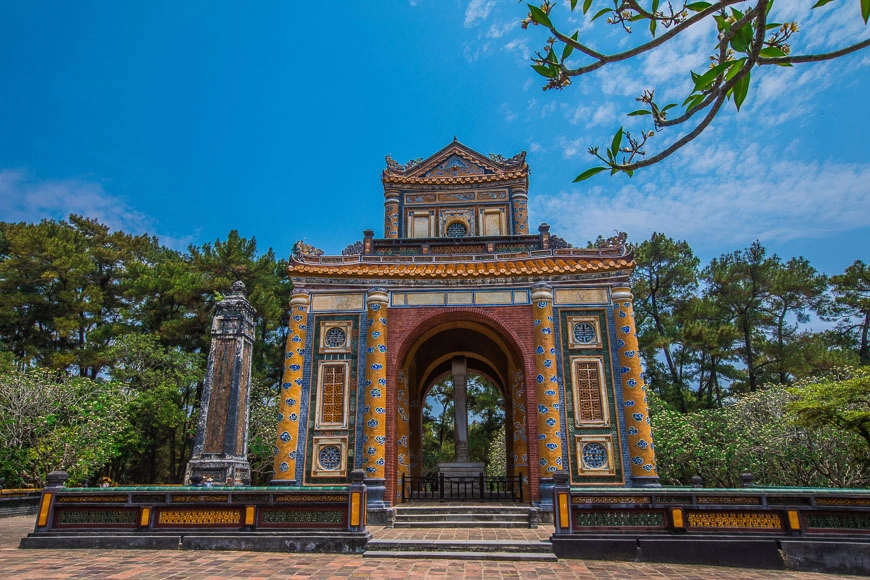
Detailed Guide to the Most Famous Imperial Tombs: Tu Duc, Khai Dinh, and Minh Mang
Tu Duc Tomb
- Location: Tu Duc Tomb Map
- Opening Hours: 7:00 AM – 5:30 PM daily.
- Ticket Price: 150,000 VND for adults; 30,000 VND for children.
Set amid pine forests, Tu Duc Tomb sprawls across 12 hectares, making it the largest of Hue’s imperial burial sites. Built between 1864 and 1867, it encapsulates Tu Duc Emperor’s poetic soul—pavilions, lotus lakes, courtyards, and a stele inscribed with the emperor’s own reflections on his reign. Serenity reigns supreme here; the site’s architecture is understated, harmonizing with nature for quiet contemplation.
Khai Dinh Tomb
- Location: Khai Dinh Tomb Map
- Opening Hours: 7:00 AM – 5:30 PM daily.
- Ticket Price: 150,000 VND for adults; 30,000 VND for children.
Completed in 1931, Khai Dinh Tomb stands apart for its flamboyant Franco-Vietnamese style. The tomb perches on Chau Chu Mountain, requiring a dramatic ascent up dragon-guarded steps. Its interiors dazzle with intricate glass and porcelain mosaics, especially within Thien Dinh Palace. The mixture of concrete, wrought iron, and brightly tiled ceilings delivers a visual spectacle unlike any other in Vietnam.
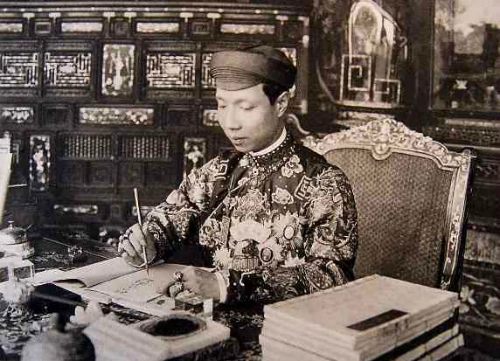
Minh Mang Tomb
- Location: Minh Mang Tomb Map
- Opening Hours: 7:30 AM – 5:00 PM daily.
- Ticket Price: 150,000 VND for adults; 30,000 VND for children.
Built between 1840 and 1843, Minh Mang Tomb is famed for its symmetry and order—a mirror of the emperor’s firm administrative style. Located at Cam Ke Hill near the meeting of the rivers, the tomb’s main axis runs through imposing gates, lakes, lotus ponds, and three stone bridges leading to the sepulchral zone. Every aspect is designed to reflect the emperor’s vision of cosmic harmony and imperial dignity.
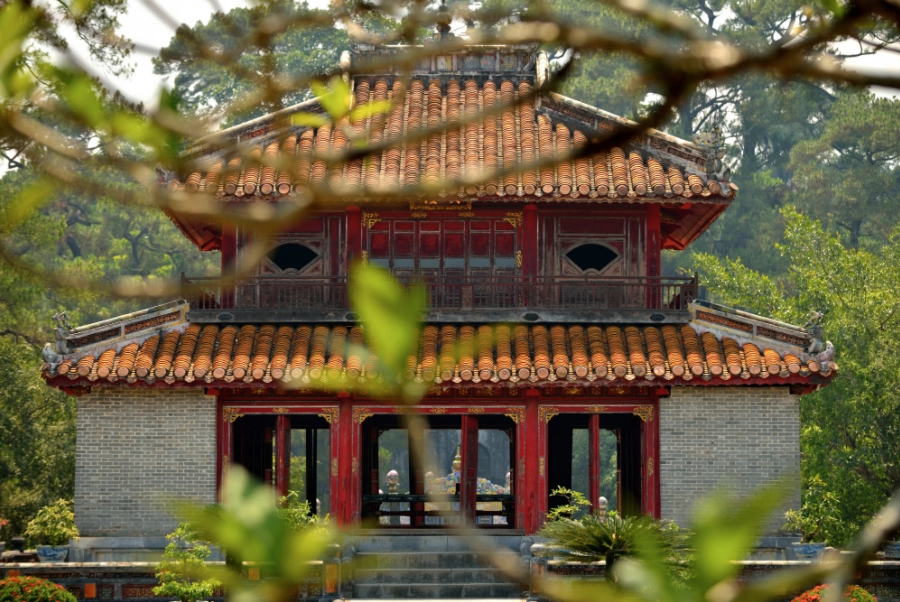
Visitor Experience and Practical Information for Exploring Hue Tombs
Planning Your Visit
To make the most of your journey with ovuigo.com to the Hue royal tombs, plan for a full day to cover the main highlights. The best time to visit Hue tombs is during the dry season (March to August) when the weather is pleasant and the gardens are lush. Guided tours of Hue royal tombs are widely available and provide insight into each site’s historical background and architectural nuances.
Entrance fees for Hue tombs are usually 150,000 VND per person per tomb, but a combined pass (420,000 VND) covering the Imperial City, Tu Duc, Khai Dinh, and Minh Mang Tombs helps travelers save. Tickets can be obtained at the main gates or in advance through official tourism sites or reputable agencies.
Most tombs open from 7:00 AM to 5:30 PM (Minh Mang Tomb from 7:30 AM – 5:00 PM). Visitor facilities—such as rest areas, souvenir shops, and refreshment stalls—are available at the entrances. Allow at least 45 minutes to 1 hour for each site. Consider renting a bicycle or hiring a xe om (motorbike taxi) for flexible exploration along the Perfume River.
For a personalized experience or special accessibility needs, reach out to ovuigo.com or contact via WhatsApp at +84868319161 for direct consultation and custom tour options.
Comparing the Styles, Histories, and Significance of Hue’s Imperial Mausoleums
Each Hue tomb reveals a unique relationship between king-to-tomb and dynasty-to-architecture. Tu Duc Tomb reflects the emperor’s poetic spirit and preference for understated, natural harmony—its landscape flows around pine woods, secret bridges, and lotus ponds. In contrast, Khai Dinh Tomb stands as a bold declaration of an era grappling with modernization, fusing Roman arches and dragon statues to showcase imperial power.
Minh Mang’s tomb, with its axis of symmetry and woven papaya gardens, clearly illustrates the Confucian ideals of balance and imperial grandeur. These differences are not random; they mirror the unique personalities of their rulers and the shifting values of the Nguyen Dynasty over time.
The tombs are among the most significant Vietnam Heritage Sites, representing both funerary culture and national pride. They are not modern buildings or living residences—they are historic sanctuaries that embody meticulous architecture and spiritual meaning.
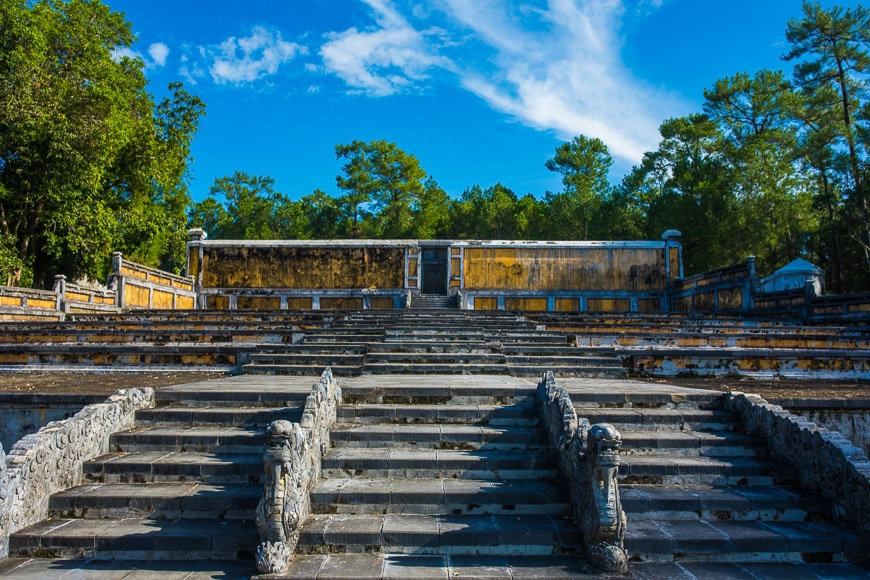
Preservation, Conservation Efforts, and Future Challenges for the Hue Royal Tombs
Preservation of Hue’s imperial mausoleums is an ongoing and multifaceted challenge. The tropical climate, floods from the Perfume River, and the effects of urban expansion all pose threats to these historical monuments. Regular maintenance focuses on structural stability, restoration of faded mosaics, and protection of rare stone carvings.
Efforts by UNESCO, local authorities, and the Vietnamese government stress the importance of safeguarding both tangible and intangible heritage. Guided by the premise that the tombs reflect ancient Vietnamese culture, these programs include digital archiving, community education, and international cooperation. Yet, increasing tourism also means that both infrastructure and visitor management must evolve, ensuring authenticity while enhancing the visitor experience.
Support for these preservation projects is crucial so future generations can continue to connect with the stories encapsulated by the Imperial Citadel and the broader Hue Monuments Complex.
Ready to explore Hue’s timeless royal necropolis? Book your tour or custom travel itinerary now with ovuigo.com and get in touch via WhatsApp: Contact ovuigo (+84 868 319 161).
If you’re seeking exceptional accommodation for your journey, consider booking The Manor Hoi An, Hola 1, or Hola 2 for an authentic stay in central Vietnam.

